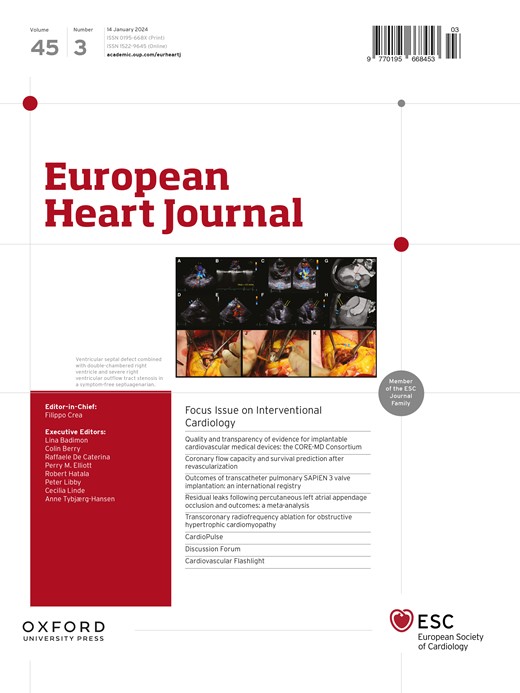降脂靶点的演变景观:从分子机制到翻译意义。
IF 35.6
1区 医学
Q1 CARDIAC & CARDIOVASCULAR SYSTEMS
引用次数: 0
摘要
心血管疾病仍然是一个主要的全球健康挑战,血脂异常是一个关键的可改变的危险因素。虽然低密度脂蛋白胆固醇(LDL-C)是降脂治疗的主要目标,但最近的证据强调了甘油三酯、载脂蛋白B (apoB)和脂蛋白(a) [Lp(a)]对剩余心血管风险的重要性。目前的降脂疗法针对的是参与胆固醇和脂质代谢的关键酶和蛋白质。他汀类药物抑制HMG-CoA还原酶,减少胆固醇的生物合成,增加肝脏中LDL受体(LDLR)的表达。本戊二酸抑制ATP柠檬酸裂解酶,该酶是甲羟戊酸途径中HMG-CoA还原酶的上游酶,通过选择性作用于肝脏,提供了他汀类药物的替代品,最大限度地减少了与肌肉相关的副作用。蛋白转化酶subtilisin/ keexin type 9 (PCSK9)抑制剂[evolocumab、alirocumab、inclisiran、leodalcibep和enlicicitide decanoate (MK0616)]可阻止LDLR降解,而依zetimibe则限制肠道胆固醇吸收。新兴的降脂靶点包括血管生成素样3蛋白(ANGPTL3)和载脂蛋白C-III (apoC-III)。抑制ANGPTL3可独立于LDL受体降低甘油三酯和LDL- c。抑制apoC-III释放脂蛋白脂肪酶(LPL)活性,促进富含甘油三酯的颗粒分解代谢,即使在完全LPL缺乏。抑制胆固醇酯转移蛋白(CETP)也会增加载脂蛋白的分解代谢。目前正在进行的降低Lp(a)的策略研究,主要但不完全是通过反义治疗,旨在证明靶向这种脂蛋白的心血管益处。总之,降低脂质和脂蛋白的靶点领域在不断发展,并为对当前治疗有耐药性或具有特定脂质异常的患者提供了新的策略。本文章由计算机程序翻译,如有差异,请以英文原文为准。
The evolving landscape of targets for lipid lowering: from molecular mechanisms to translational implications.
Cardiovascular disease remains a major global health challenge, with dyslipidaemia being a key modifiable risk factor. While low density lipoprotein cholesterol (LDL-C) is the primary target for lipid-lowering therapies, recent evidence highlights the importance of triglycerides, apolipoprotein B (apoB), and lipoprotein(a) [Lp(a)] for residual cardiovascular risk. Current lipid-lowering therapies target key enzymes and proteins involved in cholesterol and lipid metabolism. Statins inhibit HMG-CoA reductase, reducing cholesterol biosynthesis and increasing LDL receptor (LDLR) expression in the liver. Bempedoic acid inhibits ATP citrate lyase, the enzyme upstream of HMG-CoA reductase in the mevalonate pathway, offering an alternative to statins by selectively acting in the liver, minimizing muscle-related side effects. Proprotein convertase subtilisin/kexin type 9 (PCSK9) inhibitors [evolocumab, alirocumab, inclisiran, lerodalcibep, and enlicitide decanoate (MK0616)] prevent LDLR degradation, while ezetimibe limits intestinal cholesterol absorption. Emerging lipid-lowering targets include angiopoietin-like 3 protein (ANGPTL3) and apolipoprotein C-III (apoC-III). Inhibiting ANGPTL3 reduces both triglycerides and LDL-C independently of LDL receptor. Inhibition of apoC-III unleashes lipoprotein lipase (LPL) activity, promoting triglyceride-rich particle catabolism, even in complete LPL deficiency. Cholesteryl ester transfer protein (CETP) inhibition also increases the catabolism of apoB-containing lipoproteins. Ongoing research into strategies to reduce Lp(a), primarily but not exclusively through antisense therapies, aims to demonstrate the cardiovascular benefits of targeting this lipoprotein. In summary, the field of targets for lipid and lipoprotein lowering is constantly evolving and offers new strategies for patients resistant to current therapies or with specific lipid profile abnormalities.
求助全文
通过发布文献求助,成功后即可免费获取论文全文。
去求助
来源期刊

European Heart Journal
医学-心血管系统
CiteScore
39.30
自引率
6.90%
发文量
3942
审稿时长
1 months
期刊介绍:
The European Heart Journal is a renowned international journal that focuses on cardiovascular medicine. It is published weekly and is the official journal of the European Society of Cardiology. This peer-reviewed journal is committed to publishing high-quality clinical and scientific material pertaining to all aspects of cardiovascular medicine. It covers a diverse range of topics including research findings, technical evaluations, and reviews. Moreover, the journal serves as a platform for the exchange of information and discussions on various aspects of cardiovascular medicine, including educational matters.
In addition to original papers on cardiovascular medicine and surgery, the European Heart Journal also presents reviews, clinical perspectives, ESC Guidelines, and editorial articles that highlight recent advancements in cardiology. Additionally, the journal actively encourages readers to share their thoughts and opinions through correspondence.
 求助内容:
求助内容: 应助结果提醒方式:
应助结果提醒方式:


